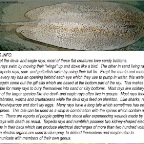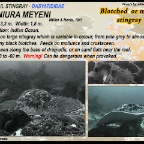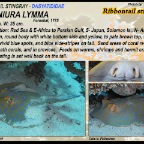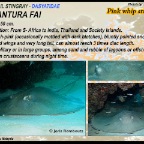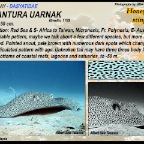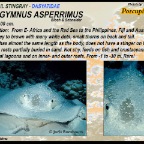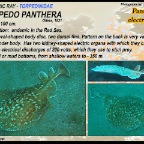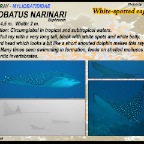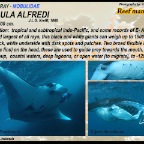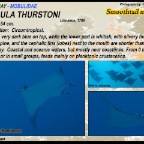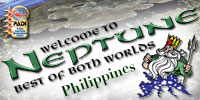Rays - Batiodei
RAYS INFO.
Except the devil- and eagle rays, most of these flat creatures love sandy bottoms. Most rays swim by moving their "wings" up and down like a bird. The other in sand living rays like torpedo rays, saw- and guitarfish swim by using their tail fin. Every ray has an opening behind each eye which they use to pump in water, this water will than again come out the gill slits which are based at the bottom part of the ray. This makes it possible for many rays to bury themselves into sand or silty bottoms. Most rays live solitary but some of the larger species like the devil- and eagle rays often live in groups. Most rays feed on invertebrates, worms and crustaceans while the devil rays feed on plankton. Like sharks, rays are Ovoviviparous and don't lay eggs. Many rays have a long tale which sometimes has one or two spines. This tale can be used as a whip in combination with the spines which contain a venom. There are reports of people getting into shock after experiencing wounds made by stingrays with death as result. Torpedo rays and numbfish possess two kidney-shaped electric organs in their back which can produce electrical discharges of more than two hundred volts. These electric organs are used to stun prey, to defend themselves and maybe also to communicate with members of their own genus.Width: 100 cm.
Distribution: from E- Africa and the Red Sea to the Philippines, Fiji and Australia.
From grey to brown with many white dots, small thorns on back and tail.
The tail has almost the same length as the body, does not have a stinger on the tail.
Solitary, rests partially buried in sand. Not shy, feeds on fish and crustaceans.
In coastal lagoons and on inner- and outer reefs. From -1 to -30 m. Rare!
Length: 3 m. Width: 1,8 m.
Distribution: Indian Ocean.
A common large stingray which is very variable in colour, from pale grey to almost
black with many black blotches. The tailsting is set well away from the base of the tail. Mostly seen along the base of drop-offs or on sand flats near the reef.
Warning! Can be dangerous when provoked (do not touch near the eyes). Length: 70 cm. Distribution: Tropical Indo-Pacific: from the Red Sea to S-Africa and Solomon Islands. This common ray is very easy to identify by the vivid blue spots on the yellow to light-brown body, bottom is white. Mostly found on sand underneath corals and in crevices. Feeds on worms, shrimps and hermit crabs.
The tail sting is set well back on the tail. Width: 670 cm.
Distribution: Circumtropical.
The largest of all rays, this black and white giants can weigh up to 1500 Kg.
Dark back, white underside with dark patches. Two broad flexible lobes(cephalic fins) on the head, these are used to guide prey towards the mouth. Solitary or in group. Close to outer reefs, deep lagunes or open water, to -30 m. Width: 150 cm.
Distribution: from S- Africa to India, Thailand and Society Islands.
Brownish-pink (occasionally mottled with dark blotches), bluntly pointed snout.
Rounded wings and very long tail, can almost reach 3 times disc length.
Lives solitary or in large groups, among sand and rubble of lagoons or offshore reefs. Feeds on crustaceans during night time. Length: 1 m. Width: 50 cm.
Distribution: from the Red Sea, S-Africa to Australia, Samoa and up to Japan.
Reddisch-brown to olive green with blue and (smaller) black spots, white belly.
The tail normally has one sting, end part of the tail has black and white rings.
This is a common stingray but not much known about it. Lives on a sandy bottom
and feeds on crabs and shrimps. Difficult to approach. Length: 4,5 m. Width: 2 m.
Distribution: Circumglobal in tropical and subtropical waters.
A beautifull ray with a very long tail, black with white spots and white belly.
The weird head which looks a bit like a short snouted dolphin makes this ray very
special. Many times seen swimming in formation, feeds on shelled molluscs and
other bentic invertebrates.


